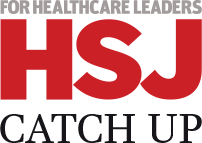Stephen McMillan, solutions leader, Philips Europe and UK & Ireland, writes how collaboration, and shifting healthcare services into community settings can help attain productivity and financial gains
The healthcare industry is undergoing a monumental transformation. Technology is on track to change the way care is delivered with automation, generative AI, virtual care, and data insights. This brings huge potential to improve collaboration between teams in different locations and shift from resource-intensive clinical facilities to lower-cost community settings and into the home environment.
Advertorial by

But we know that financial challenges remain. This means investment in new technology is not always an option. The Philips UK Future Health Index reveals that 77 per cent of leaders have faced delayed, limited or no investment in medical equipment and technological solutions. The recent Lord Darzi report also highlighted the critical need to modernise NHS facilities and technology.
While the government has promised an extra £1.57bn of capital investment for new surgical hubs, scanners, and radiotherapy machines as part of this year’s Budget, the service needs significantly more investment to deliver an NHS that is fit for the future. This includes having the people to operate the scanners, report on the results and then treat the patients – as well as productivity measures to make best use of the equipment.
In this article, we explore how the NHS can work around foreseen funding challenges, including why the focus must now be on the optimisation of systems using digital innovation for productivity and financial gains – and to bring care closer to home.
Optimising existing technology
State-of-the-art technology is reshaping healthcare, and increased investment in digital innovation is essential to scale this transformation. Yet, with persistent budget constraints, NHS teams are being pushed to “sweat the assets” – to do more with existing resources. This transformation relies on enhancing older systems with updated software and using data-driven care to relieve pressures while building a sustainable future – both environmentally and financially.
Data analytics is especially powerful here, helping to streamline patient flow, improve resource allocation, and optimise treatment plans, with the Future Health Index revealing that 56 per cent of healthcare leaders see its greatest potential in personalised care pathways, and 39 per cent in reducing hospital readmissions. However, data integration remains a challenge for 94 per cent of healthcare leaders. This highlights the need for better interoperability and investment in the right systems to intelligently interrogate the data, create insights and take required action, to deliver timely, high-quality care.
Optimising technology also means choosing solutions that maximise the longevity of current equipment and resources. Predictive maintenance, for example, can reduce costly downtime, extend equipment lifespan, and ensure patients have reliable access to the care they need.
Embracing financial innovation
According to the Future Health Index, a staggering 92 per cent of healthcare leaders report fiscal challenges that hinder their organisations’ ability to deliver timely, high-quality care. This financial pressure is driving leaders to explore more flexible financing options, such as subscription-based and as-a-service models with partners.
These innovative approaches are crucial for the NHS, as they provide a pathway to access essential equipment without being constrained by capital limitations, allowing costs to scale according to demand. We are actively supporting our customers in this area and receiving positive feedback on these initiatives.
This is why partnerships between industry and the NHS are so vital; they enable teams to explore new avenues for driving innovation at scale. By collaborating, we can deliver new assistive technologies that create meaningful impact, optimise existing assets and finances, and ultimately empower healthcare professionals to provide better patient care.
Bringing care closer to home
In addition to optimising resources and embracing innovative financing, shifting more healthcare services into community settings can significantly reduce costs while improving patient access and outcomes.
Recognising this potential, the Future Health Index found that around 72 per cent of healthcare leaders are already investing in preventive care – including “step-up” and “step-down” services, and 74 per cent are focusing on community health initiatives to mitigate long-term healthcare expenses.
Investments in telehealth, remote patient monitoring, and home-based treatments empower patients to receive care in the comfort of their own homes, enhancing convenience while lowering operational costs. This strategy not only personalises healthcare for patients but also aligns with the NHS’s financial goals, fostering a sustainable and adaptable healthcare system that can meet increasing demand without expanding hospital infrastructure.
Scaling innovation through partnerships
Financial limitations should not stifle innovation in healthcare. By optimising existing technology, exploring innovative financial solutions, and making targeted investments, the NHS can drive sustainable improvements in patient care and operational efficiency.
Public-private partnerships are crucial in scaling technological advancements across the NHS. They provide access to cutting-edge technologies and expertise, helping to overcome financial barriers to innovation while ensuring efficiency and enhancing care delivery in community settings. If you’d like to explore these ideas further, please get in touch.































